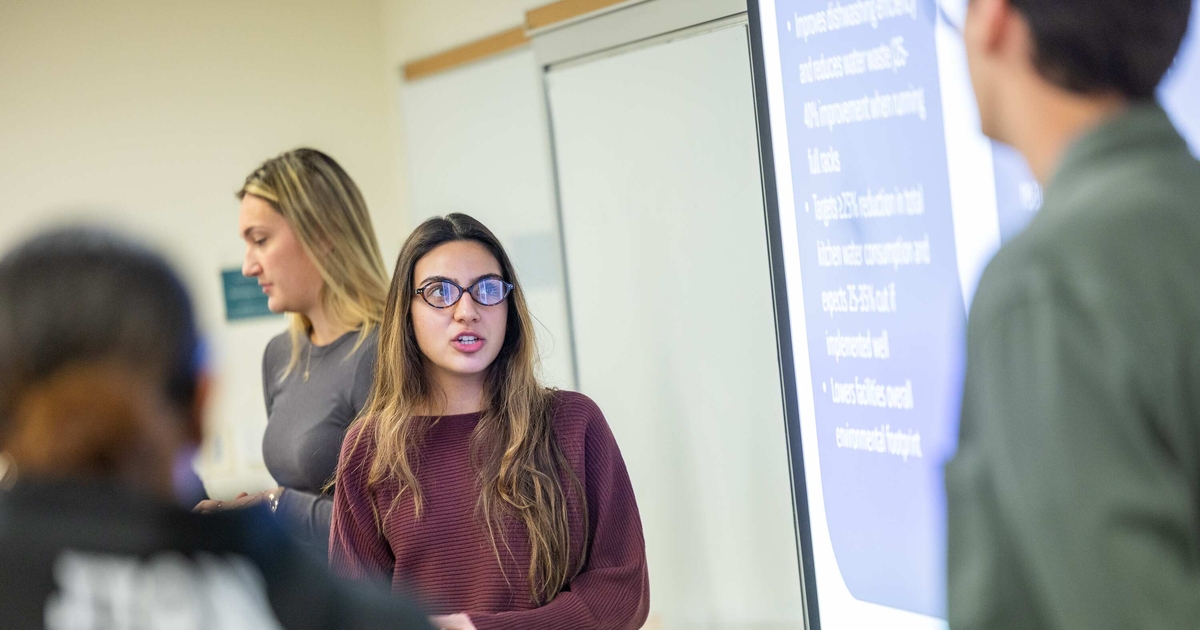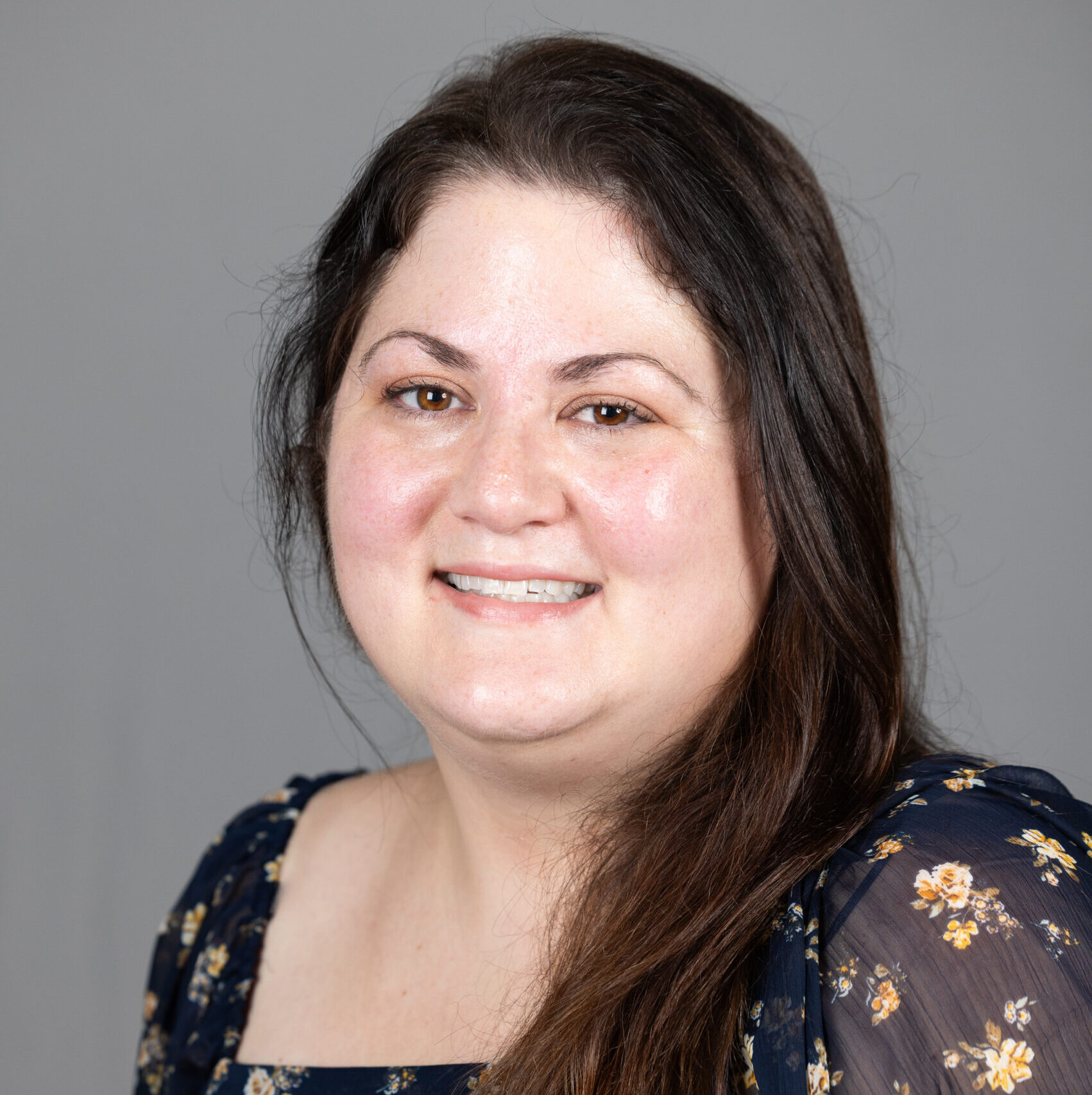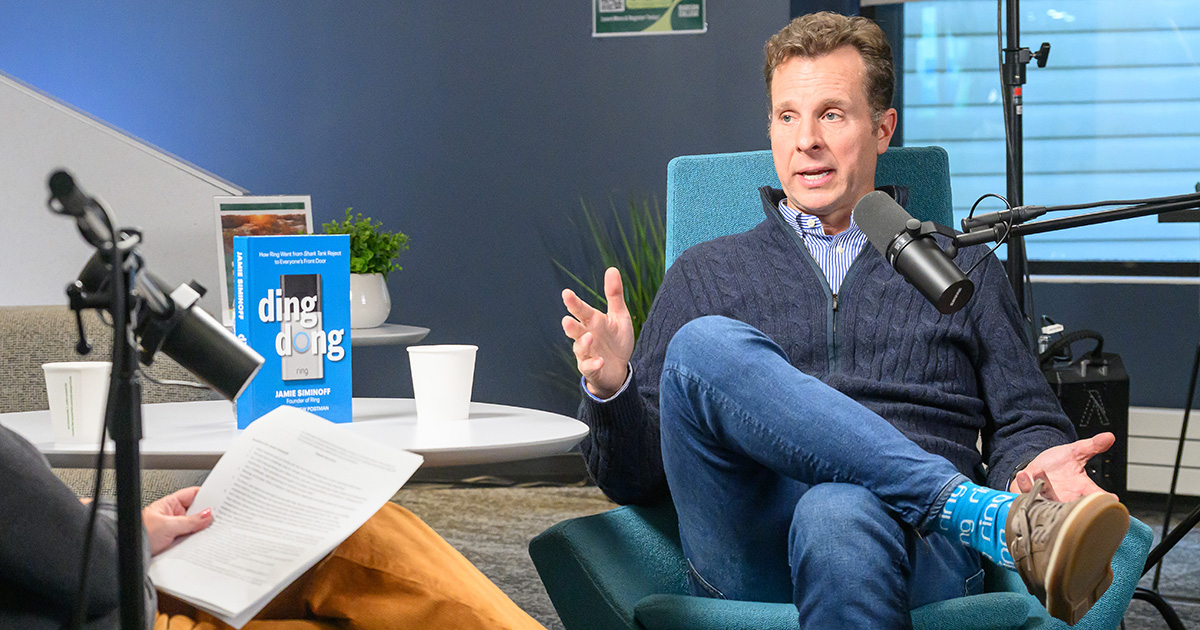From Text Prompt to Furniture: The Story Behind Babson’s AI Dam Chair
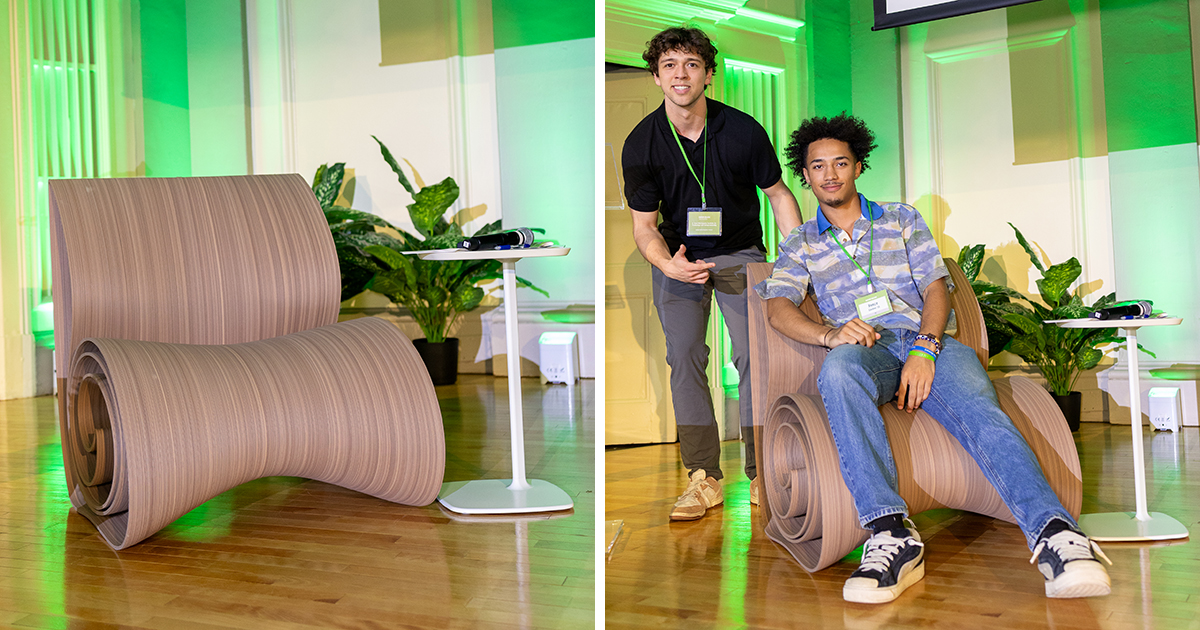
It’s a chair, functionally the same as any other created over the past 4,700 years.
This one, though, is different. It’s an attention-getter. It’s a technological breakthrough. And, it just looks darn cool.
But the story behind this particular chair and what it represents is even cooler.
The Dam Chair—as it’s been dubbed by the two students who spearheaded its creation, Vaness (Reece) Gardner ’26 and Cole Collins ’26, in a nod to Babson’s beaver mascot—is believed to be the first full-scale chair designed with generative artificial intelligence installed on a college campus. The chair is the result of a groundbreaking, end-to-end AI workflow from text to image to 3D prototype to full-scale printing in recycled wood fibers and cellulose.
“This is an amazing example of what our students’ entrepreneurial mindset can do with rapidly evolving AI.”
D. R. Widder MBA’99, vice president of innovation at Babson
“The Dam Chair is what we’re calling it, and it was all about the idea of bringing together community,” Collins said. “It’s a culmination of all these factors coming into one that really makes this a large milestone for not just us, not just for creatives, but for Babson as a whole.”
Fittingly, the chair was on stage, under the spotlights, at the first Babson College AI Showcase, hosted by the C. Dean Metropoulos Institute for Technology and Entrepreneurship. And, there now are three on campus: at the Herring Family Entrepreneurship Leadership Village, outside the Office of the President, and in the lobby of Weissman Foundry, where the journey of the AI chair began to come to life.
“This is an amazing example of what our students’ entrepreneurial mindset can do with rapidly evolving AI,” said D. R. Widder MBA’99, vice president of innovation at Babson. “And, you can sit in the chair and contemplate what’s next! Babson has invested heavily in AI resources, and the Weissman Foundry is a great starting point for students with new ideas of all kinds.”
A Really Big Breakthrough
The story of the Dam Chair begins two years ago.
Gardner spent the summer before his sophomore year working with Associate Professor Erik Noyes, the faculty director of The Generator, Babson’s interdisciplinary AI lab.
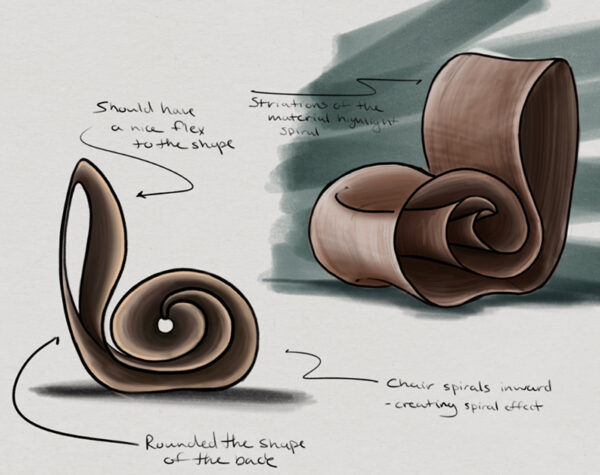
Gardner has been an entrepreneur “since I was basically conscious,” he said. As a 9-year-old, he created and sold Rainbow Loom Bracelets, called Reece’s Pieces. He expanded into sneakers and eventually a vintage clothing business called Urgent Revolution, which he worked on in his first year at Babson.
And, Noyes, also the Michael London ’92 and Stephen H. Kramer ’92 Term Chair in Entrepreneurship, had been Gardner’s Foundations of Management and Entrepreneurship professor. “That was the first collaboration, the first sign that this was probably meant to be,” Gardner said.
Gardner and other students began experimenting with text-to-image AI tools, such as Midjourney and DALL-E. Noyes was continually encouraging Gardner and others to take the next step. How can we use these tools to rapidly prototype? How can we make this physical? They found their answer last fall with the latest version of Meshy AI, a powerful tool to create 3D models from text or image prompts.
“The first thing I thought of, which could be applicable in terms of prototyping, was a chair. I had already made images of chairs for different product designs, seeing where my creative flow would take me,” said Gardner, whose creativity also includes DJing at events around campus, including the AI Showcase.
Armed with a 3D model, Gardner turned to the Weissman Foundry and its 3D printer. “I thought I can just go and print it and hold it in my hand,” he said. “And, I was able to do that, which was a really, really big breakthrough, I think, for me and Babson College in general.
“The chair was the breakthrough that made me realize what is possible,” he added. “Once I saw that it was possible, I couldn’t just stop at the prototype. I needed to execute. I needed to bring it to fruition.”
‘Center of Innovation’
The small, hand-held prototype of the chair was only the first tangible step toward something bigger.
Gardner soon enlisted Collins in the design journey. Collins originally came to Babson as a baseball player, but he opted to focus on his academics and other opportunities on campus. He gravitated toward finance and became the VP of finance with the AI Club.
“It was another step of Babson being the center of innovation right now for product design, which is really cool.”
Cole Collins ’26
His ambitions soon shifted because of The Generator, first at an event called “How I Use AI” in spring 2024, which captivated his interest, then at the inaugural Generator-Microsoft Entrepreneurship & AI Buildathon in November at the Weissman Foundry. It was there that Collins, Gardner, and the other participants took another step, using another AI tool, Gravity Sketch, and virtual reality (VR) goggles to refine designs before printing them. That’s when Collins literally visualized what was possible.
“That day with Gravity Sketch and being able to show off that VR component, there’s a tangibility to it,” Collins said. “When you’re actually holding that 3D product that you just printed off, that’s the oh-my-gosh factor, that wow factor. It was another step of Babson being the center of innovation right now for product design, which is really cool.”
Eager Beavers
The excitement of their discoveries—and the encouragement of Noyes—motivated Gardner and Collins toward the final step.
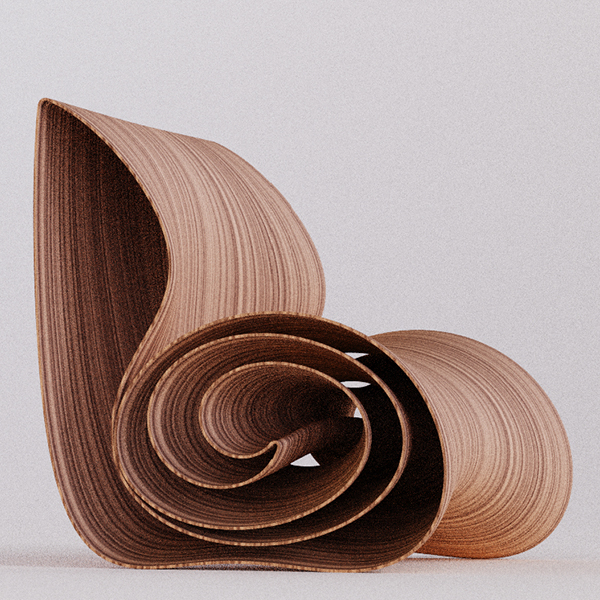
“It was definitely a big breakthrough, and we shared that moment, yet we realized, OK, this is the first step,” Gardner said. “Now, we’re seeing that next step really come to life. It’s taking that 3D prototype and turning it into a full-scale product that’s ready for implementation and installation.”
The duo reached out to campus leaders, such as Widder and Kallan Lock-Durken, director, innovation program at the HELV, about bringing their concept of a full-scale chair to life. In addition to conceiving and pitching more than a dozen AI-generated images of chairs, they discovered Decibel Made, a New Jersey-based company that makes furniture and architectural elements through robotic 3D printing.
The students and campus leaders rallied around the design of the Dam Chair with its unique appearance and strong connection to Babson roots and its beaver mascot. And the eager beavers worked with Decibel Made to facilitate the creation and delivery of three Dam Chairs to install at meaningful places around campus.
“It really does reflect all of Babson,” Collins said. “The (inspiration) of the dam really does show that sense of community out of Babson, that strength.”
What’s Next?
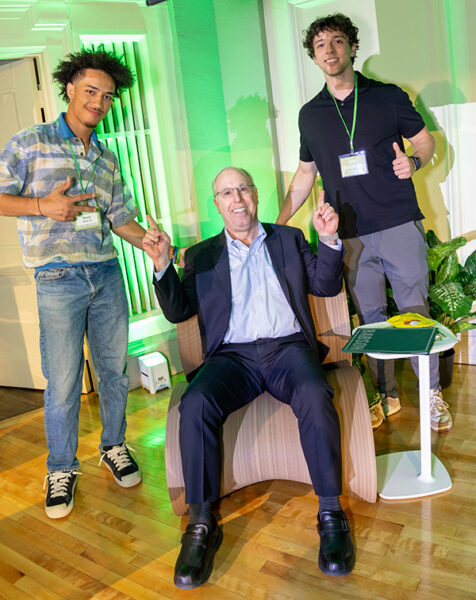
For Gardner and Collins, the Dam Chair is only the beginning. They now are launching BIND (which stands for Biomimicry Is Nature’s Design), a 3D design brand to create on-demand, AI-generated furniture.
“We really see this becoming the forefront of product design,” Collins said.
Gardner credits Noyes for having the foresight to see what they could do. And, now Gardner envisions a limitless future for what’s possible.
“AI is such an accelerant, the timelines between innovations and taking that next step up is getting shorter and shorter and shorter,” he said. “I truly believe that in two years, I’m going to be able to go from a prototype of a house or a building and 3D print that house or building.”
First things first, more than anything, Collins and Gardner hope the Dam Chair spurs further creativity and exploration on campus.
“If you’re sitting in something that you know someone else created on campus, that sparks inspiration for you to go out and do this yourself, too,” Collins said. “We want students designing on campus for campus, by the students, and there’s nothing cooler than that.”
Posted in Community, Entrepreneurial Leadership, Outcomes



